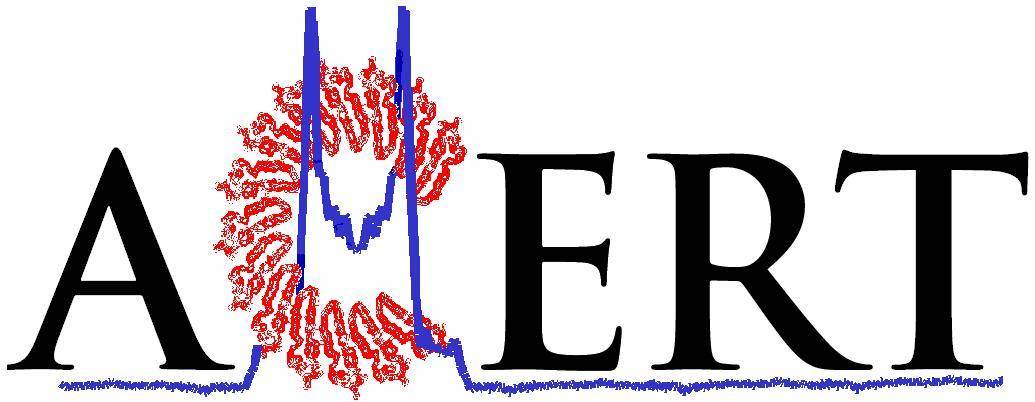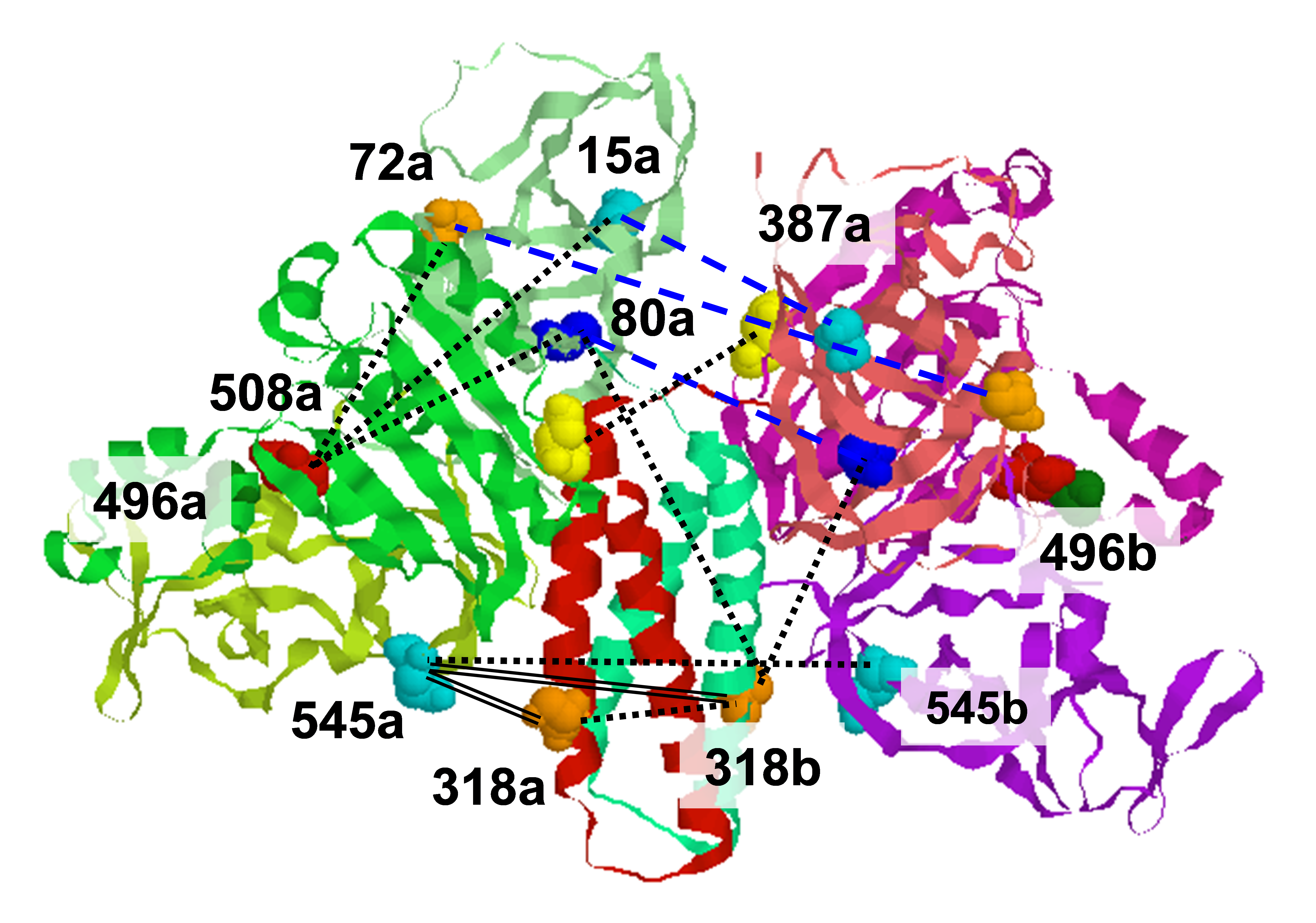.svg) National Institute of General Medical Sciences |
 |
 |
National Biomedical Resource for |
| ACERT's Service and Collaborative Projects | |||
Studies of structure and dynamics of proteins are important for the understanding of protein function. We have shown that multi-frequency ESR studies can reveal the complex dynamics of proteins in different environments. Extensive ESR spectra were obtained over a wide range of frequencies: 9, 95, 170 and 240 GHz from 2 to 32°C to explore the dynamic modes of nitroxide labeled T4 lysozyme in solution. In separate experiments, the nitroxide side chain, R1(MTSSL) or R2 (4-methyl-MTSSL) was attached to solvent-exposed helical sites, 72 or 131 (See left Figure below). The spectra, at all four frequencies were simultaneously fit with the slowly relaxing local structure (SRLS) model. Very good fits were achieved at all the temperatures. Two principal types of dynamic modes: the global tumbling of the protein and the internal motion consisting of backbone fluctuations and side chain isomerizations, are included in the SRLS model (see right Figure below). We have shown that the extensive sets of multi-frequency ESR Spectra (well over 100) can be fit very well to a common model. In general, 3 components with different side chain mobility are present in spectra of R1 (consistent with modeling of Tombolato, et al.). They are: mobile, intermediate and immobile components. In spectra of R2, only intermediate and immobile components are present. Spectra of R1 are dominated by the intermediate component, whereas for R2 (with added methyl group) the immobile component is dominant and the motion of the intermediate component is slower. For 131 vs. 72 R1 131 has less ordered mobile and intermediate components. For 131 vs. 72 R2 the ordering of the respective components is similar, but the population of the intermediate component is greater, and that of the immobile component is less, for 131R2. This study shows that multi-frequency ESR is a powerful tool for studying the dynamics of biological systems. Publication: Z. Zhang, M.R. Fleissner, D.S. Tipikin, Z. Liang, J.K. Moscicki, K.A. Earle, W.L. Hubbell, and J.H. Freed, J. Phys. Chem. B, 114, 5503-5521 (2010); PMC2865245 |
|||
|
|||
|
Ziwei Zhang, Dmitriy S. Tipikin, Zhichun Liang, Jozef K. Moscicki, Keith A. Earle,(Baker Laboratory of Chemistry and Chemical Biology, Cornell University, Ithaca, New York 14853-1301) Mark R. Fleissner, Wayne L. Hubbell, (Jules Stein Eye Institute and Department of Chemistry and Biochemistry, University of California, Los Angeles, California 90095-7008) Jack H. Freed (Baker Laboratory of Chemistry and Chemical Biology, Cornell University, Ithaca, New York 14853-1301) |
|||
|
|
About ACERT Contact Us |
Research |
Outreach |
ACERT is supported by grant 1R24GM146107 from the National Institute of General Medical Sciences (NIGMS), part of the National Institutes of Health. |
|||||
| ||||||||